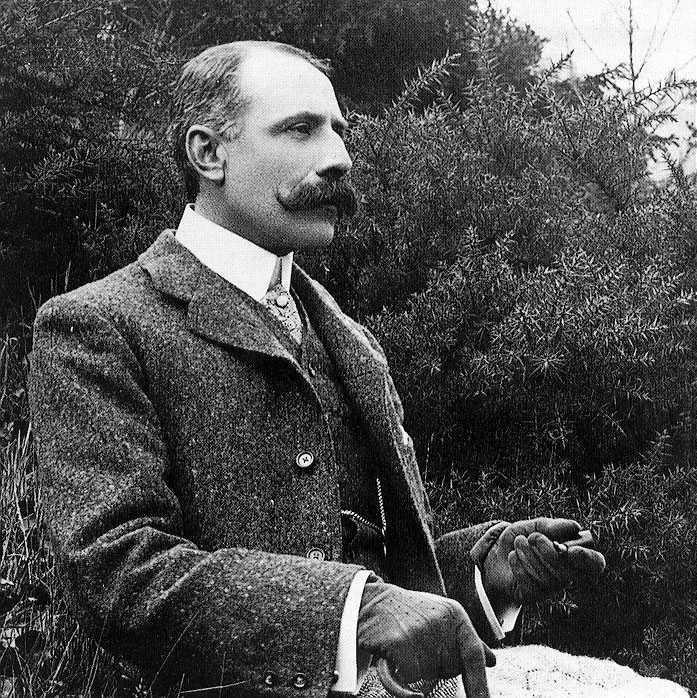Sir Edward Elgar’s Variations on an Original Theme – better known as the Enigma Variations – make up one of the composer’s best-loved works, each one inspired by the personalities of Elgar’s closest friends. In 1968, The Royal Ballet’s Sir Frederick Ashton had the foresight to realise that this theme would make a colourful and entertaining ballet – and the result is one of the most delightful works in the Company’s repertoire.
As the story goes, Elgar – going through a period of anxiety about his art – sat at the piano at his home in Worcestershire one October evening in 1898, improvising a tune which his wife found rather appealing. For fun, the composer then starting adapting it to create musical caricatures of some of his friends, and over the following few months, the full set of fourteen variations took shape, creating the work that is said to have secured Elgar’s reputation at both a national and international level.
The twelve friends are identified only by their initials, or a single name – as are Elgar and his wife Alice – to whom the first variation, C.A.E., is dedicated. This is followed by H.D.S.P. – Hew David Steuart-Powell, a pianist with whom Elgar played in chamber ensembles; R.B.T. – Richard Baxter Townshend, who played the part of an old man in an amateur theatre production; W.M.B. – William Meath Baker, a country squire; R.P.A. – Richard Arnold, son of the poet Matthew Arnold; Ysobel – Isabel Fitton, an amateur viola player from a local music family; and Troyte – Arthur Troyte Griffith, a Malvern architect with an apparently limited capability as a pianist.
The Eight Variation is entitled W.N. – referring to Winifred Norbury whom Elgar knew through her association with the Worchestershire Philharmonic Society; the Ninth is Nimrod, referring to A J Jaeger, a great friend who encouraged Elgar when he was struggling to establish a lasting reputation. This variation – probably the most familiar of all – is thought to relate to a discussion on Beethoven’s slow movements. Dorabella is a portrait of Dora Penney, a close friend and daughter of the Rector of Wolverhampton, and the Eleventh is entitled G.R.S. – George Sinclair, an organist at Hereford Cathedral – although this variation apparently portrays Sinclair’s dog paddling after falling into the River Wye.
B.G.N. refers to Basil Nevinson, an amateur cellist with whom Elgar and Hew Steuart-Powell played in a chamber music trio; and the Thirteenth Variation is represented simply by three stars – which are thought to refer to Lady Mary Lygon, a local noblewoman who sailed for Australia around the time of this composition, although there is speculation that they conceal the identity of a former fiancée of Elgar’s. The final variation is listed as E.D.U. – representing the composer himself, since Alice’s pet name for him was Edoo.
The title of the work refers to two enigmas – the first being the identity of each of the friends represented – and the second refers to a musical theme which isn’t heard, but which Elgar hinted might have been a melody of which the theme is the counterpoint. He never explained further, and to this day nobody knows for sure which melody he had in mind.
This enchanting, essentially English work is one which dancers of The Royal Ballet love – portraying the varied characters of Elgar’s closest friends at an imaginary gathering at his home in the country. With Elgar’s hauntingly beautiful score, enhanced by the period Edwardian costumes designed by Julia Trevelyan Oman, it’s more than a ballet – it’s a piece of history, a portrayal of actual life.
The Royal Ballet streams Sir Frederick Ashton’s Enigma Variations online from 7.00 pm GMT on 4th December and on demand until 3rd January. For tickets and further details, visit The Royal Ballet website.
Information sourced from:
The Royal Ballet programme notes
Elgar – his music

